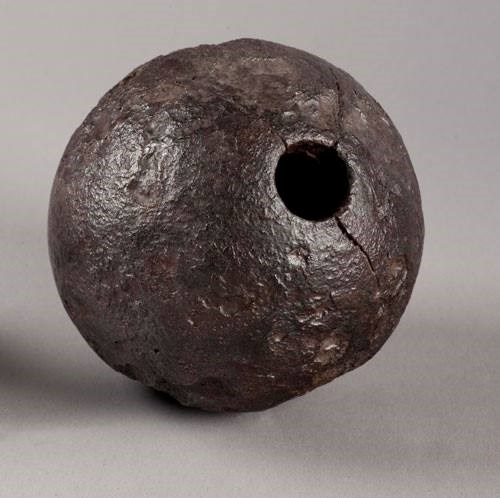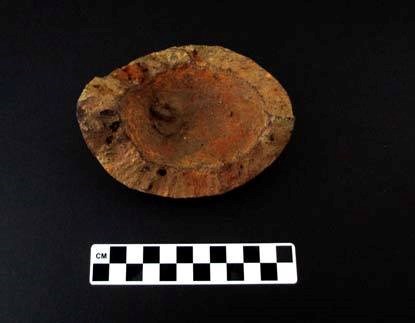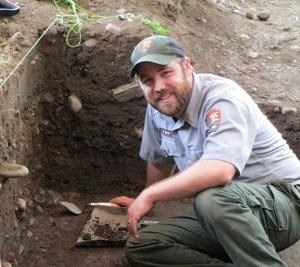Part of a series of articles titled Curious Collections of Fort Stanwix, The Oneida Carry Era.
Previous: Powderhorn
Article

NPS Photo
Mortar bombs, like the ones featured here, were hollow exploding iron spheres used by militaries in the 18th Century. Mortar bombs were often used during sieges because they could be fired at a high angle so that the bombs would drop behind earthworks or wooden walls and cause interior damage to a fort (Gooding 1980: 4). During the 21 day Siege of Fort Schuyler (previously named Fort Stanwix), British troops lobbed 4.5 inch "Royal" mortars, pictured here, at the fort (Hanson and Hsu 1975: 78).
In his journal, Lieutenant William Colbrath noted that from August 2nd to the 15th, Fort Schuyler had sustained relatively heavy fire (Lowenthall 1983: 33). Lt. Colbrath recorded that the British fired nearly 137 bombs at the fort. While the fort sustained consistent fire, the shots were often not accurate or effective. On August 20th, 1777, First Lieutenant Philipp Jakob Hildebrant, noted in his journal that the British fired eight mortar bombs at the fort, but only one successfully hit and exploded within the fort (Retzer and Barker 2012: 39).
NPS archeologists uncovered numerous mortar bomb fragments during their excavations in the 1970s. Recent archeological excavations at the park in 2013 revealed an additional mortar bomb fragment at the bottom of a feature located outside the original fort walls (pictured on right).

NPS Photo

NPS Photo
Gooding, S.J. 1980. An introduction to British Artillery in North America. Historical Arms, vol. 4. Museum Restoration Service, Ottawa.
Hanson, L. and D. P. Hsu. 1975. Casemates and Cannonballs: Archeological Investications at Fort Stanwix National Monument, Rome, NY. Department of the Interior, Washington, D.C.
Lowenthal, L. 1983. Days of Siege: A Journal of the Siege of Fort Stanwix in 1777. Eastern National. Edited and reprinted from original Colbreath Journal located in the Rosenbach Museum and Library.
Retzer, H.J. and Barker, TM. 2012. The Hessen-Hanau Jägers, the Siege of Fort Stanwix and the Battle of Oriskany: The Diary of First Lieutenant Philipp Jakob Hildebrant. The Hessians: Journal of the Johannes Schwalm Historical Association 15: 35-44.
Part of a series of articles titled Curious Collections of Fort Stanwix, The Oneida Carry Era.
Previous: Powderhorn
Last updated: June 4, 2023